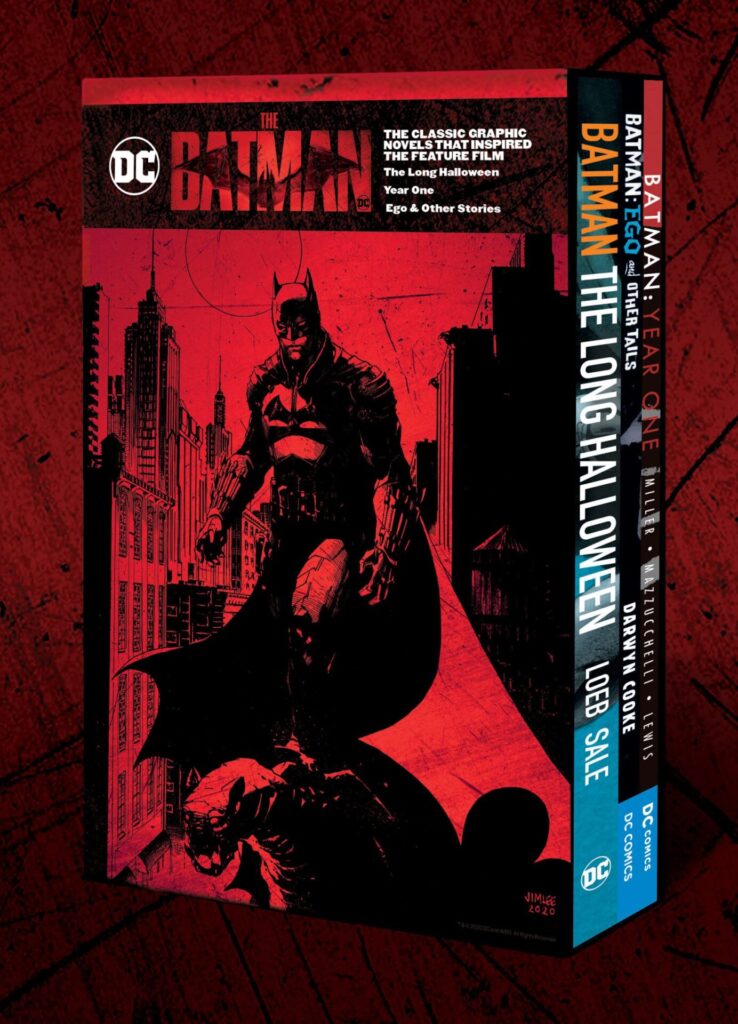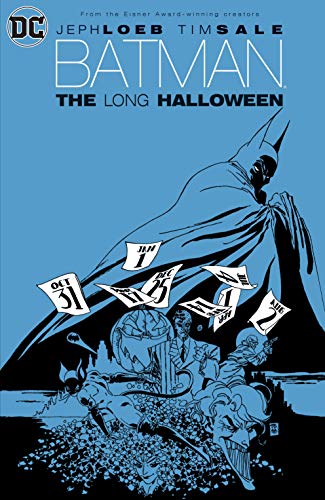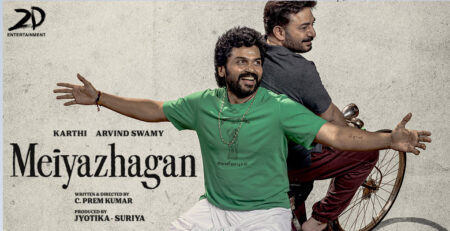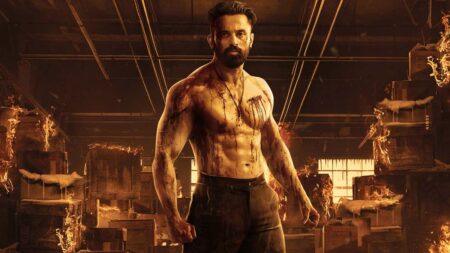What makes The Long Halloween significantly different is that it is a classic noir-murder mystery of the James Ellroy types
The traditional Batman story arc is angsty, with its brooding ‘hero’ (is he?), the constant refrain of the past, the death of the parents, his sleepless state and, of course, the odd job he has taken on of patrolling the city at night dressed in a costume that only someone without a mirror at home, or one with a perverse fascination for rodents, would don.
Perhaps tired of this routine about a classic Freudian case, Jeph Loeb and Tim Sale produced The Long Halloween (TLH), first published in 13 parts in 1996-97, and now available in a single volume whose predominant colour code ranges from grey to grey-black. Widely regarded as a classic, Loeb-Sale’s text is, simply put, spectacular.

Murder and mayhem
What makes TLH significantly different is that it is a classic noir-murder mystery of the James Ellroy types. A murderer is on the loose in Gotham: s/he kills on holidays, and holidays only. The chapters are named after holidays and significant days – Mother’s Day, Independence Day, Father’s Day, Labor Day, etc., and on each such day, a murder occurs.
Batman, the beleaguered Jim Gordon and the District Attorney Harvey Dent seek to stop the murders and catch the ‘Holiday killer’. Meanwhile, Gotham is tearing itself apart, as the gang war between the Falcone and Maroni empires heats up, so that the cops have to divide their energies between the murder hunt and stopping the gangs.
Red herrings are strewn across the plot. At one point, a connection is even forged between Bruce Wayne and Falcone, because Thomas Wayne had once treated Falcone’s son at the Wayne Manor. (This scene has lines from Mario Puzo’s The Godfather: ‘look at what they’ve done to my boy’, and ‘sometimes having a powerful friend is better than having all the money in the world’) causing Gordon and Dent to investigate Bruce Wayne. Even Dent is suspected of being Holiday. There are two odd ‘romances’, if we can call it that, between Catwoman and Batman, and Poison Ivy intoxicating, literally, Bruce Wayne.
The body count rises, and in a courtroom spectacle, Dent has acid thrown in his face – as Loeb marks the origin of Two-Face in this story-arc. All of the Batman villain-verse is employed in the plot: The Joker, Scarecrow, the Mad Hatter, the Riddler, Solomon Grundy and finally, Two-Face. The twists in the tale cohere into a climax, as the Holiday killer is finally revealed.
Or so we think.
Sale goes all out to depict the Dark Knight as a heavy-muscled, scowling vigilante with some amazing drawings. Batman looms across the page/panel, coming to occupy the centre-stage and concomitantly shrinking everyone else. ‘Larger-than-life’ was never truer than in TLH.
Family drama
TLH has a large dose of family drama, and this makes for considerably melodramatic moments. There is the expected Wayne family history, and the mandatory scene of Bruce Wayne at the cemetery. There are the recollections – teary, gloomy – of his parents and their murder. Alfred Pennyworth’s role as surrogate father is highlighted in four panels as he assures Wayne: ‘You are very much your father’s son’.
Sale does a fantastic job here of depicting Pennyworth on the long, curving staircase, with Wayne weeping on a lower step, the fatherly hand on the crying man’s shoulder, Wayne’s face with large swathes of black across it and, finally, the two of them together on the stairs, and silhouetted in the window of the Manor.
Loeb spends some time on the tensions in the Falcone family, between Carmine Falcone, his sister Carla Viti, Falcone’s Oxford-Harvard educated son, Alberto, and Falcone’s daughter, Sofia. Their rivalries, loyalties – thin at best – and dynamics are revealing in that Loeb paints even the villains as affected by the same human emotions as others.
Read Batman: Contagion, How It Explained Our Pandemic Prejudices by Pramod K Nayar
Loeb’s representation of Falcone’s love for his son, Carla’s anger and Sofia’s anguish ensures that we see them in their most vulnerable moments, mourning the deaths in the family, the rejections. For example, when Sofia gives her father a gift for his birthday, he is dismissive and preoccupied, and Sale captures Sofia’s anguished expression beautifully.
Elsewhere, the Gordons are having a rough time, as the conscientious cop has no time to spare for his family. Gilda and Harvey Dent are trying to start a family, and they too experience discord, unhappiness and threat – climaxing when the Dent home is blown up.
These add a different dimension to the tale, as Loeb strives to temper the noir, which has the mystery, the murders, the gang-wars and the forever-chasing cops, with the family saga – but never letting us forget that mafias have always been family-run. This shift in the plotting makes TLH a different Batman tale.
The Noir turns
Through the tale, we are told that it is Batman who brings all the villains to the city of Gotham. That is, it is the very presence of the masked vigilante that draws the criminals and the criminally insane to Gotham, and attempt to wreck it or wrest it from Batman.
In this line of thought, the superhero attracts supervillains, or villains who then become supervillains. The noir here turns inside out where the Batman is then held responsible at least indirectly for the chaos embodied in the Joker, the Holiday killer, the Mad Hatter and others. Elsewhere, as we know, the Joker would even claim affinity with Batman – which Nolan dwelt on in passing in The Dark Knight – suggesting they are two sides of the same coin.
The Batman universe is peopled with psychotic villains. However, given the prehistories of their individual traumas that are revealed to us, bit by bit, forensic psychiatrists and others have questioned whether it is accurate, and ethical, to depict afflicted individuals as evil, monstrous and villainous, since their culpability for their destructive actions is uncertain. The Joker’s ‘insanity’, for example, has been endlessly debated – and even called ‘supersanity’ in Arkham Asylum.
Read The Batman Review: The Knight Grows Darker by Pramod K Nayar
Other commentators, like Travis Langley in Batman and Psychology, argue: With few exceptions, Batman’s enemies know what they are doing. They know who they hurt and they know it’s wrong. For some of them, that’s what makes it fun.
TLH is no different, merging the psychological thriller – everyone in the tale is damaged goods in some form or the other – with the noir.
‘The Long Halloween’ is a wonderful thriller, plotted with fiendish cunning and disquieting intensity, giving characters like Falcone, Dent and Gordon as much turmoil trauma as the hero. In Gotham crime flourishes, justice is thwarted, violence is endemic, as those who compete for Gotham’s soul are themselves at risk of losing their souls – like Harvey Dent in this text.
In such a city, is it a surprise that every day ends in a dark knight?
Write to us at editor@indiaartreview.com





1 Comment
Their is no dout that batman is the most iconic character of DCU.